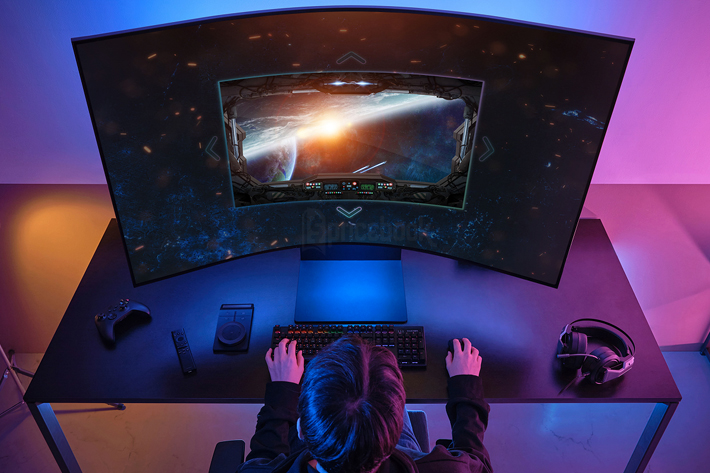When it comes to gaming on a PC, one of the most crucial components that can significantly enhance the gaming experience is the monitors. With advancements in display technology, gamers now have a wide array of options to choose from, each offering unique features tailored to different gaming preferences. Let’s explore some of the common types of PC monitor specifically designed for gaming:
TN (Twisted Nematic) Monitors
TN monitors are known for their fast response times, making them popular among competitive gamers. These monitors typically offer high refresh rates, often reaching up to 240Hz, which reduces motion blur and provides smoother gameplay. However, TN panels usually have narrower viewing angles and inferior color reproduction compared to other panel types.
IPS (In-Plane Switching) Monitors
IPS monitors are prized for their superior color accuracy and wider viewing angles, making them ideal for immersive gaming experiences. While they may have slightly slower response times compared to TN panels, modern IPS monitor with higher refresh rates still offer excellent gaming performance. Additionally, IPS panels deliver vibrant colors and better image quality, enhancing the visual appeal of games.
VA (Vertical Alignment) Monitors
VA monitor strike a balance between TN and IPS panels, offering decent response times, good color reproduction, and deep black levels. They are well-suited for gamers who prioritize both fast-paced gameplay and visual fidelity. VA panels are known for their high contrast ratios, resulting in richer colors and better image depth, which can enhance the overall gaming immersion.
Ultra-Wide Monitors
Ultra-wide monitor feature an aspect ratio wider than the standard 16:9, providing a broader field of view and a more cinematic gaming experience. These monitors are particularly popular among enthusiasts who enjoy immersive gaming genres such as racing or simulation games. Ultra-wide monitor often come with curved displays, further enhancing immersion by wrapping the screen around the player’s field of view.
4K Monitors
4K monitors offer incredibly sharp and detailed visuals, thanks to their high resolution of 3840 x 2160 pixels. While demanding in terms of GPU performance, 4K monitor provide unparalleled clarity and realism, making them ideal for visually stunning games and immersive experiences. However, achieving consistently high frame rates at 4K resolution may require powerful hardware configurations.
G-Sync and FreeSync Monitors
G-Sync and FreeSync are adaptive sync technologies developed by NVIDIA and AMD, respectively, to eliminate screen tearing and stuttering during gaming by synchronizing the monitor’s refresh rate with the GPU’s frame rate. Monitor equipped with G-Sync are compatible with NVIDIA GPUs, while FreeSync monitor work with AMD GPUs. These technologies enhance smoothness and responsiveness, resulting in a more fluid gaming experience.

Conclusion
In conclusion, choosing the right monitor for gaming involves considering factors such as panel type, resolution, refresh rate, and additional features like adaptive sync technology. Each type of monitor offers distinct advantages, catering to different gaming preferences and budgets. By understanding the characteristics of various monitor types, gamers can make informed decisions to optimize their gaming setups and elevate their gaming experiences to new heights.





















+ There are no comments
Add yours